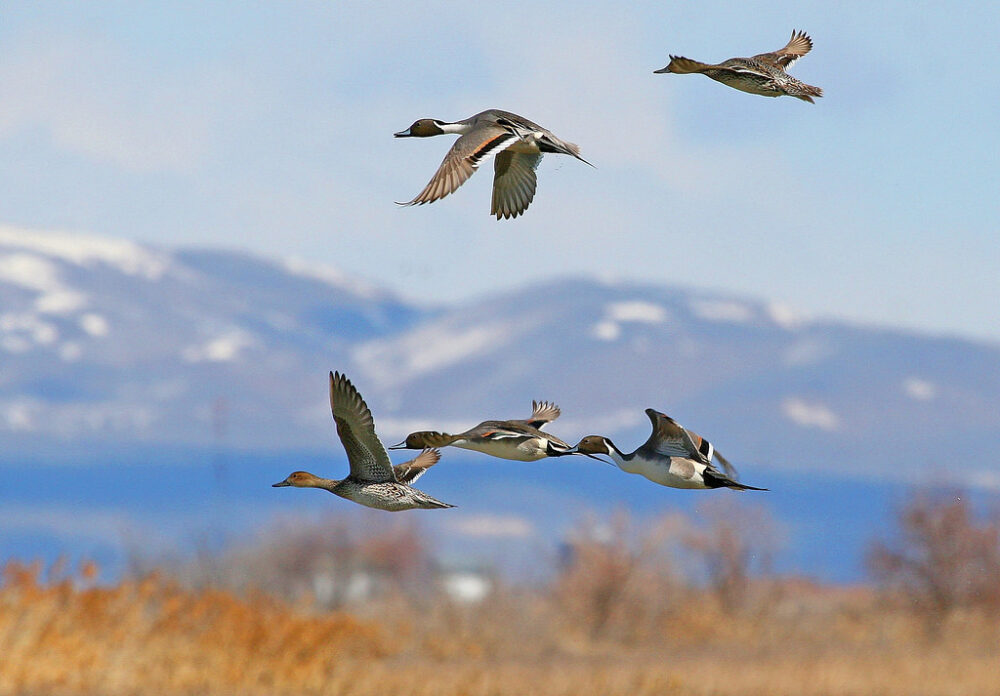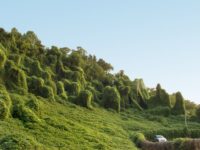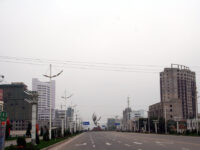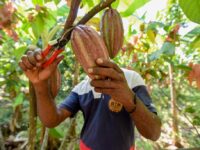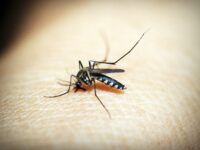As food availability in the Northern Hemisphere decrease in the fall, many birds travel southward. This seasonal trend of mass travel is known as migration. To prepare for a large migration, birds often stock up on fruits and other food sources. But with invasive plant species overtaking their native counterparts, birds are struggling to obtain the nutrients they need to migrate.
Throughout the world, invasive plant species have outcompeted their native counterparts, often overwhelming entire habitats due to an optimal growing climate and lack of natural predators. Native species may be “phased out” and completely removed from their environments, with invasive species providing for the ecosystem. Many of these invasive plant species propagate and spread their seeds via fruits, hoping that animals such as birds consume them and bring them elsewhere to grow. However, as the Earth warms due to climate change, bird migrations and plant phenology are altered in a way such that native plants produce fruit earlier than their invasive counterparts. According to a 2015 study led by Utah State University researcher Amanda Gallinat, this creates a situation where “birds could encounter fewer native fruits in late-autumn, creating an opportunity for invasive plants to have enhanced fruit dispersal due to lower competition for dispersers.”
“However, as the Earth warms due to climate change, bird migrations and plant phenology are altered in a way such that native plants produce fruit earlier than their invasive counterparts.”
Would these birds prefer native species to invasive ones now that there are fewer native fruits as the season progresses? To test this hypothesis, Gallinat studied birds’ eating patterns in Manomet, Massachusetts, a prime location for migration stops for many birds in the Northern Hemisphere. Gallinat teamed up with Boston University biology professor Richard Primack and Trevor Lloyd-Evans, a researcher at the Manomet Bird Observatory. In Manomet, there are plenty of native and invasive plants that provide food sources for these migratory birds. This makes the region an attractive area for birds to stop by during the migration season. Before birds migrate, they prefer fruits that are dense in energy, fat, and antioxidants so that they have more stamina for their upcoming odyssey, according to a study from the University of Rhode Island.
The team decided to focus on 25 fruiting species in the area, 10 of which are classified as invasive species. To determine the diets of the birds that were consuming the fruits these plants were bearing, 970 fecal samples were taken over a two-year period and analyzed to see if there were any seeds of the plants found within them. The seeds were then identified via color, shape, surface patterns, and size. The results favored native species. Gallinat and her collaborators concluded that the majority of the birds sampled showed strong evidence of choosing “to consume native species that were present in low abundance or were no longer ripe, rather than the abundant invasive ripe fruits on site.” This means a lot in regard to native seed dispersal and plant distribution. It shows that many migratory species still depend on these native resources for their high nutritional value, despite the abundance of invasive fruits in the area.
“many migratory species still depend on these native resources for their high nutritional value, despite the abundance of invasive fruits in the area.”
This case study provides further incentives to protect our native species against invasive ones. Without the proper nutrition provided by these native fruits, many of these migratory birds would have to stop more frequently during their migration, putting themselves at risk of predation or starvation. These birds also run a chance of an incomplete migration due to weakness caused by a lack of proper nutrition. Furthermore, the ingestion of invasive species by migratory birds can cause the birds to spread invasive seeds along the migratory corridor, which can destroy native habitats across hundreds of miles. It is important to be aware of the implications of invasive species and the damage they cause to natural ecosystems. Birds continuing to choose native species provides a promising light to the preservation and hardiness of our native species.
Biological Conservation (2020). DOI: 10.1016/j.biocon.2019.108268
The Wilson Journal of Ornithology (2013). DOI: 10.1676/12-057.1
https://wildlife.org/migrating-birds-choose-native-fruits-over-invasive-berries/
https://www.sciencedirect.com/science/article/abs/pii/S0006320719314946?dgcid=raven_sd_aip_email
